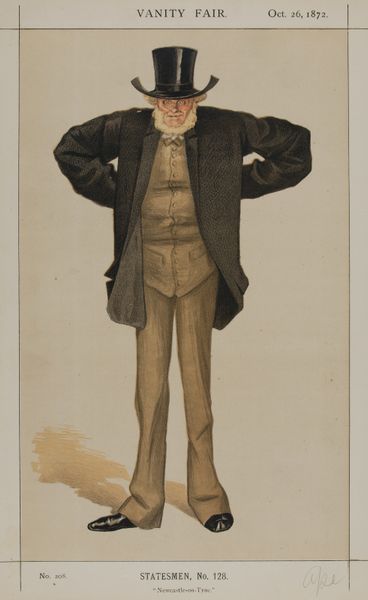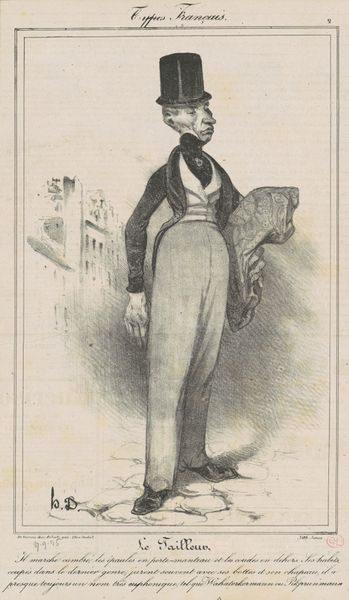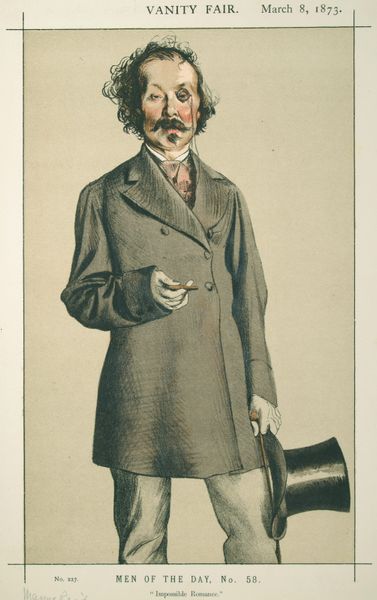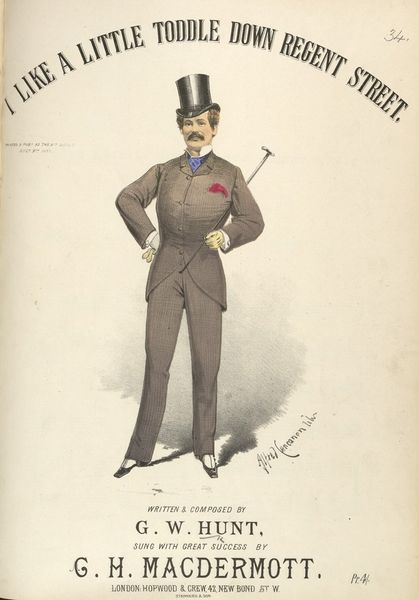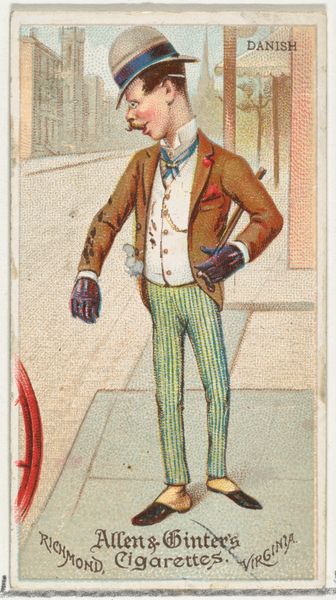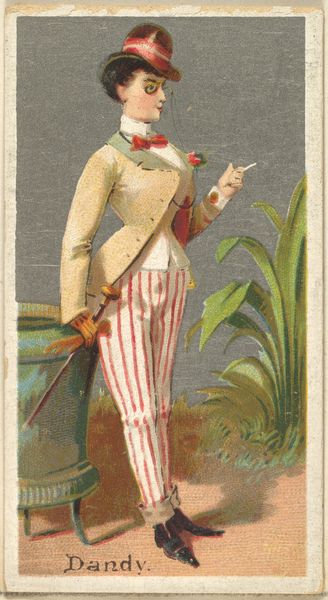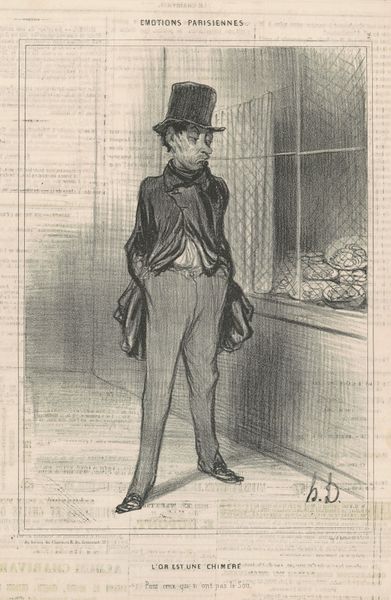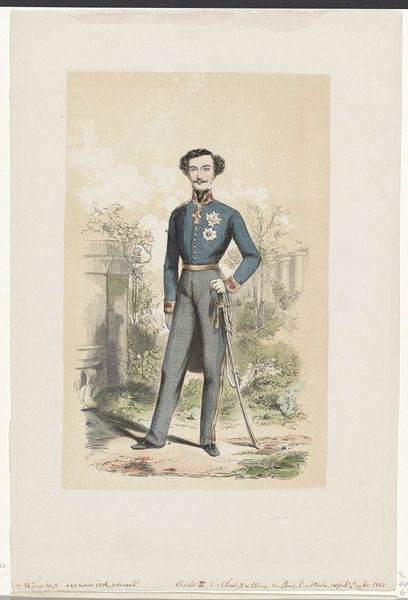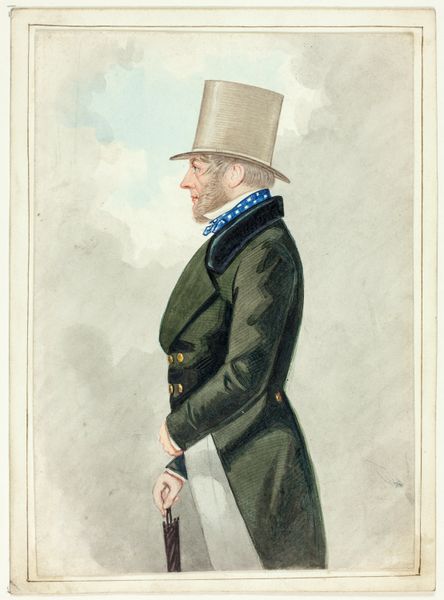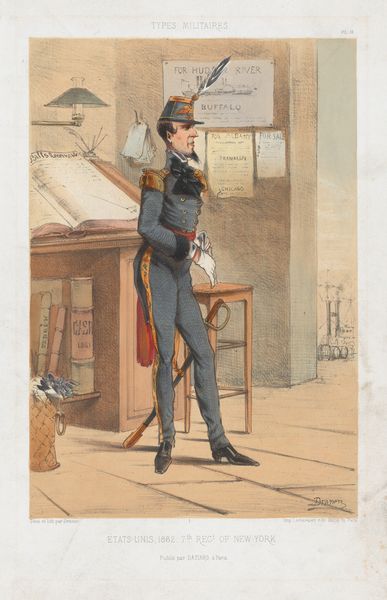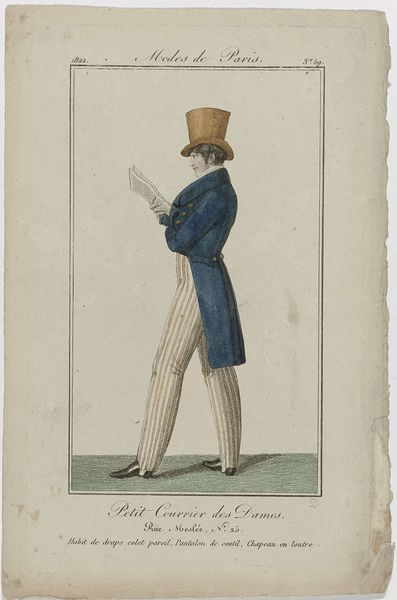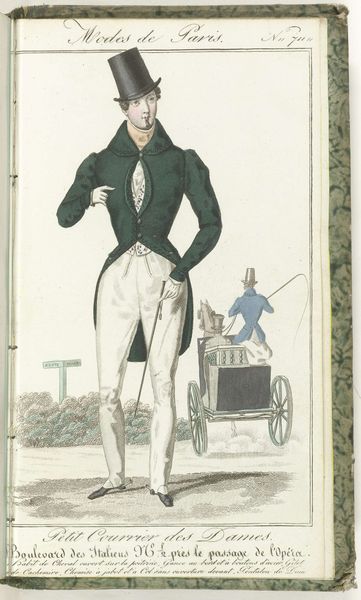
Cover design for ''Lounging in the aq.'', Sung by George Leybourne 1880
0:00
0:00
graphic-art, lithograph, print
#
portrait
#
graphic-art
#
lithograph
# print
#
19th century
#
genre-painting
Copyright: Public domain
Curator: This lithographic print, titled "Cover design for 'Lounging in the aq.', Sung by George Leybourne," dates to 1880. It’s part of the collection at the Victoria and Albert Museum in London and was designed by Alfred Concanen. It shows a well-dressed gentleman, presumably Leybourne, in front of an aquarium. My immediate thought is of public persona and leisure, reflecting its function as printed music cover. Editor: What strikes me is the tension between the highly crafted and constructed presentation of the figure – his tailored suit, his posture – and the context provided through printmaking: its industrial mode of distribution as sheet music speaks volumes of a booming leisure market. Curator: Indeed. It's fascinating how the print employs mass production to market what essentially boils down to a vision of elite leisure. He's shown in this very particular public space, signifying the increasing commercialisation of leisure activities for varied classes. Editor: Exactly. Lithography democratized image production and consumption; making visual and performance culture widely accessible, not just high society. Think about the material qualities: cheap paper stock that was never designed to last, but designed to communicate, sell, and then disappear. The work lives less as 'art' and more like commercial ephemera. Curator: And this performative element feeds into the spectacle of Leybourne himself, whose stage presence depended heavily on constructed character. The image isn’t just a portrait; it’s marketing the manufactured idea of what entertainment and leisure *should* be like. Editor: And this carefully constructed persona – this perfectly manicured individual and scene - exists because of, not in spite of, the materials and manufacturing processes deployed to broadcast it. That it has lasted, and that we see it here, speaks of its initial social impact, how it fed back into shaping visual taste of an expanding public. Curator: Agreed, seeing how entertainment industries have long relied on portraying aspirational lifestyles. We're essentially examining an early blueprint of modern celebrity culture here. Editor: It’s really powerful to consider what this reveals about the conditions and cultural economy under which it came to be. And that makes it feel even more relevant today, actually.
Comments
No comments
Be the first to comment and join the conversation on the ultimate creative platform.

